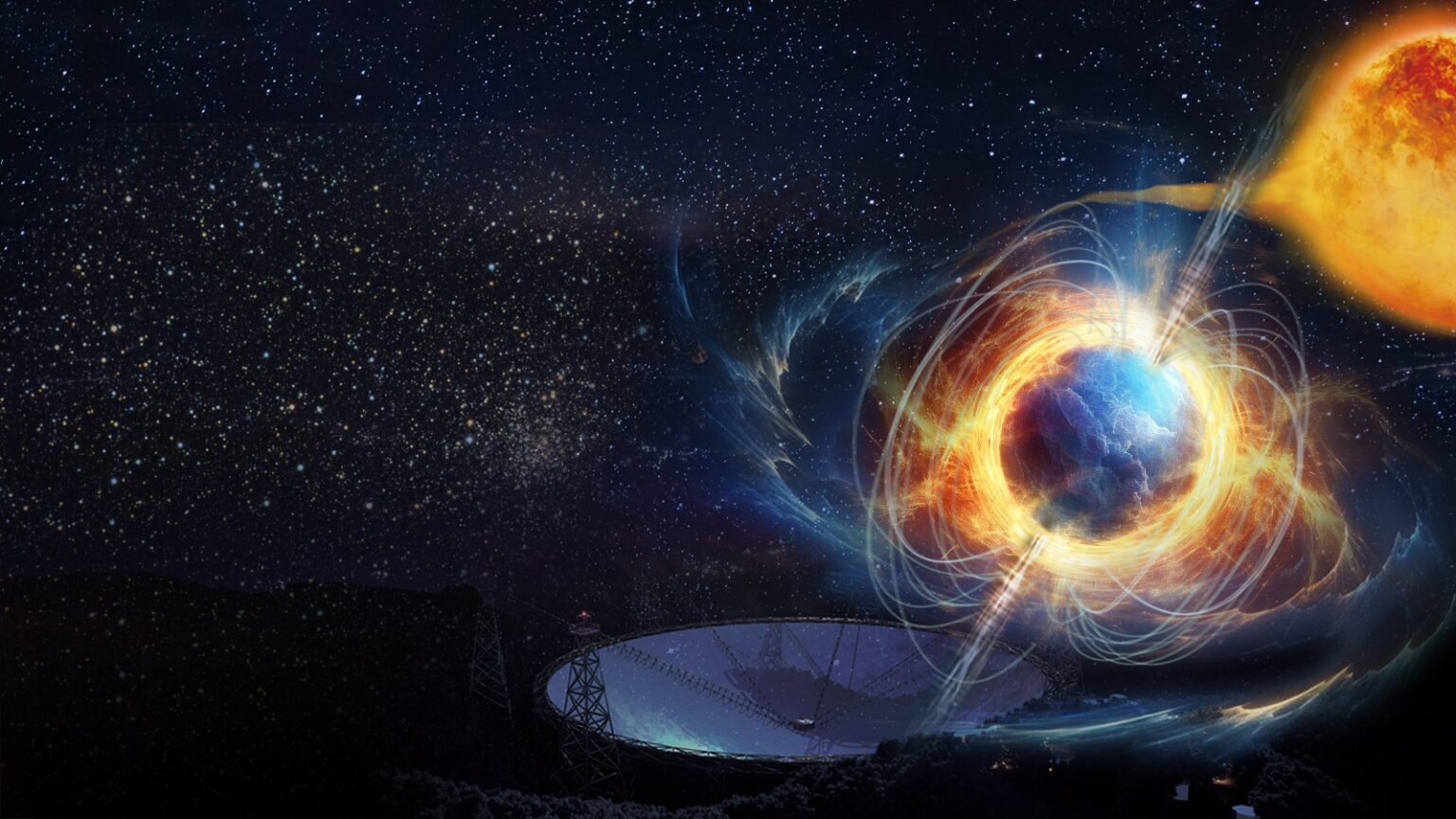A study of the globular cluster Omega Centauri has revealed numerous so-called “spider” pulsars. They are systems of ordinary and neutron stars. Scientists have found that the harsh X-ray radiation of the latter destroys the surrounding stars.

“Spider” pulsars in a globular cluster
Astronomers used the Chandra Space Telescope to study the globular cluster Omega Centauri. The telescope operates in the X-ray range. It contains about 10 million luminaries and is removed from us at a distance of 15–17 thousand light years.
Scientists were interested in pulsars, which were part of Omega Centauri. They are neutron stars that formed as a result of supernova explosions and rotate extremely fast. If this happens over a period of approximately one millionth of a second, they are called milliseconds.
A special case of millisecond pulsars is their “spider” variety. These are systems that, in addition to a neutron star, also include an ordinary luminary. Together, they form a tight pair. The intense radiation of the first ones actively destroys the outer layers of the second ones. This is very similar to how female spiders of the “black widow” species devour their partners, therefore, this name is fixed for similar systems.
Later, it was discovered that there were two types of pulsar and habitual star systems, and there was a significant difference between them. For those of them that have a companion star mass of less than 5 percent of the solar mass, the name “black widows” has been fixed. Those with this value ranging from 10 to 50 percent of the solar mass were called “redbacks” in honor of a related arthropod species. And together they are called “spider” pulsars.
Results of the Chandra telescope research
A study carried out using the Chandra telescope made it possible to find 11 millisecond pulsars in the Omega Centauri cluster, 5 of which turned out to be “spiders”. The scientists combined the results of their observations with data on 26 more similar objects found in 12 other clusters and reached interesting conclusions.
It turns out that there really is a difference between the two types of “spider” pulsars. The more massive the companion star, the more intense the X-ray radiation. It is believed that it occurs when particles from pulsars collide with the “stellar wind” from their companions.
This leads to interesting consequences. On average, “spider” pulsars are removed from their companions at a distance of 1 to 14 distances from the Earth and the Moon. This is very little by cosmic standards, and radiation can really damage the stars.
According to the study, the heaviest companions of neutron stars are exposed to intense radiation. This means that their outer shells are destroyed faster than those of small stars. Scientists plan to continue using the Chandra telescope to study this process.
According to phys.org
Follow us on Twitter to get the most interesting space news in time
https://twitter.com/ust_magazine


